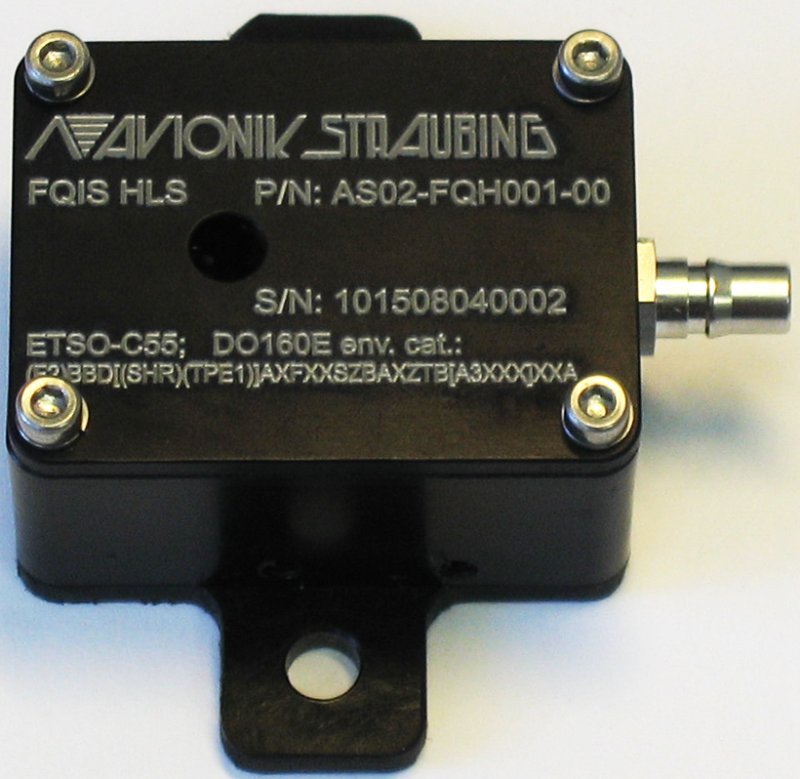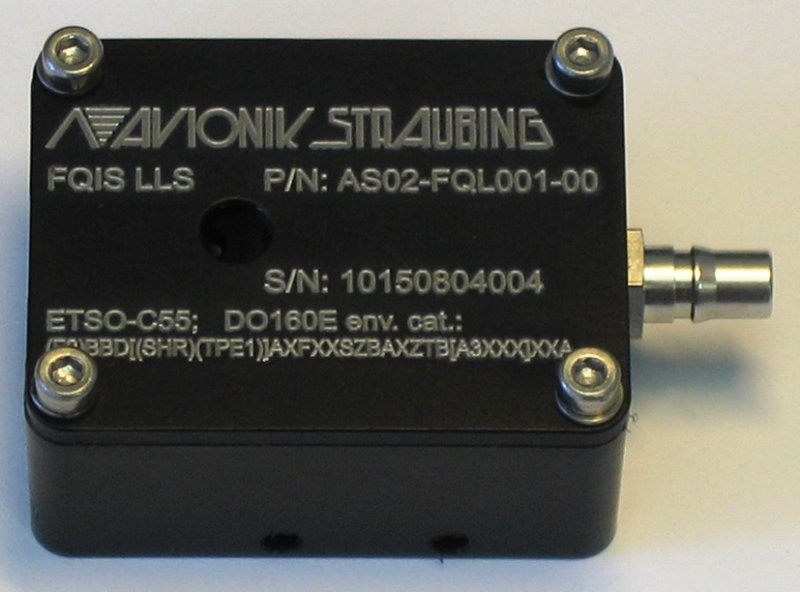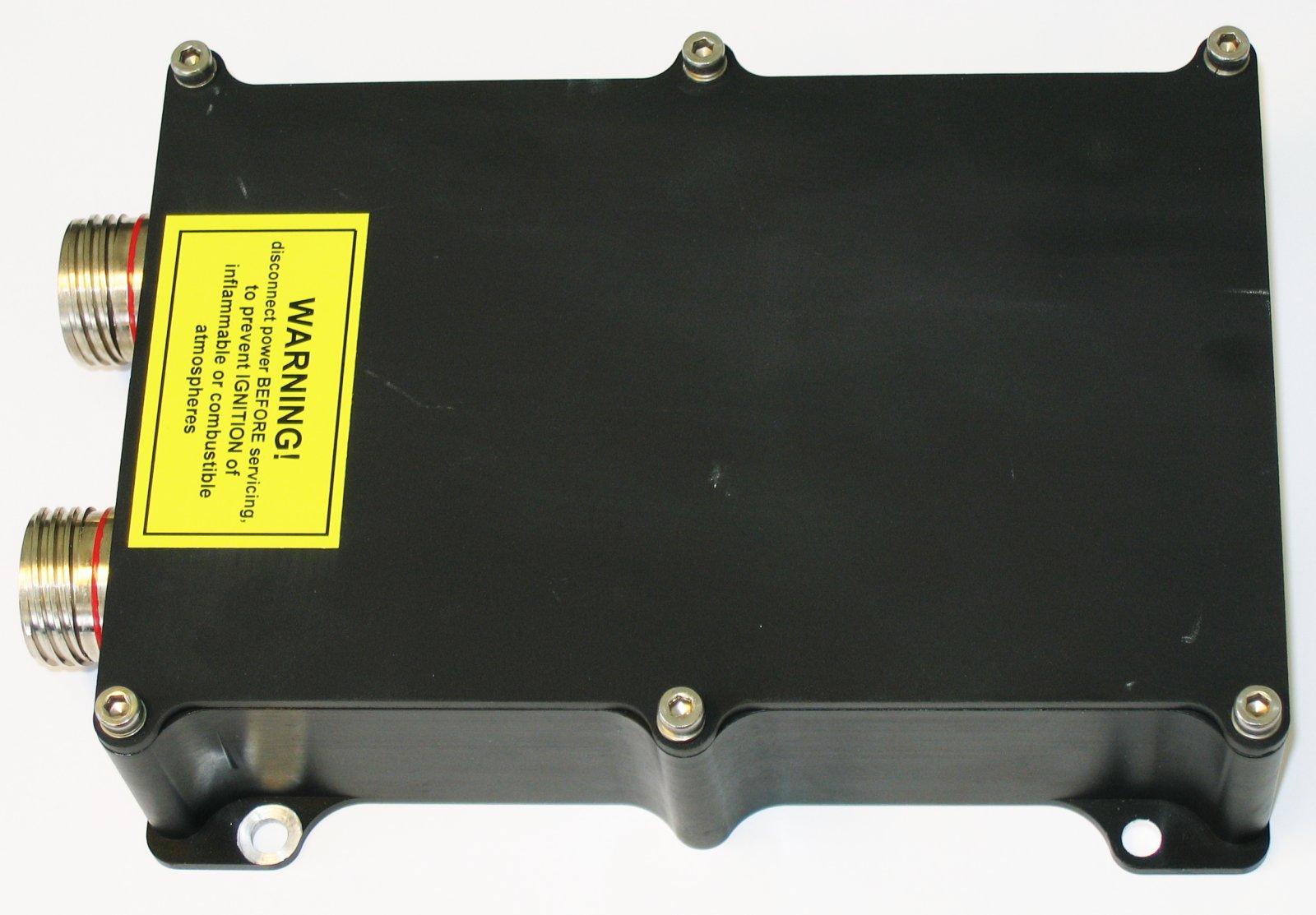Fuel Quantity and Indication System FQIS
The Fuel Quantity Indication System is a fuel quantity and low fuel level sensing and indicating system. Application specifics for the system components are:
- Active Capacitance Probe (ACP) with mount
- High Level Switch (HLS)
- Low Level Switch (LLS) - Sensor Connecting Cables (SCC)
- Signal Conditioner Unit (SCU), inclusive Firmware
The FQIS is a multi-probe active capacitance device used to determine the fuel quantity and optronic devices to detect a high and low level fuel state in aircraft tanks.
Digital capacitive probe values and the level sensing signal(s) are monitored by a fuselage mounted electronic signal conditioner. Conditioned electrical signal values representing the fuel quantity and fuel level state(s) are available for cockpit indicator display(s).
Active Capacitance Probes (ACP)
The probe is a one piece design consisting of 2 integral coaxial tubes positioned with Teflon spacers. A small housing with integral electronics is attached to the outer tube. The outer tube is always at ground potential and is acting as electrostatic shield. A fixed and an adjustable mounting clamp together with a isolating spacer is used to attach the probes to the existing mounting clamps. As a micro power device the ACP matches latest safety regulations (< 20 micro joules / 10mA) following AC-25.981-1C. The cable length between sensor and conditioner is uncritical due to digital signal transmission.
High Level Switch (HLS)
The HLS is an optronical device detecting the deflection of a light beam by means of a photo sensitive semiconductor. The deflection coefficient is depending upon a submerged or non submerged optical device. The HLS is also a micro power device of <20 micro joules / 10mA.
Low Level Switch (LLS)
The LLS is an optronical device detecting the deflection of a light beam by means of a photo sensitive semiconductor. The deflection coefficient is depending upon a submerged or non submerged optical device. The LLS is also a micro power device of <20 micro joules / 10mA.
In Tank Cable Harnesses (ITH)
The signal of the ACPs, HLSs and LLSs is transmitted through a prefabricated coaxial cable to the tank break though connector with uncritical cable length. The ITH assemblies are not covered by the FQIS System ETSO.
Signal Conditioner (SCU)
The SCU acts as interlink between the ACP's, HLS's and LLS's and the aircraft indicator (s). The system consists of 2°ea. SCU's for FWD-tank and AFT-tanks., 7 ea. ACP's, 1 HLS and 3°LLS. The level sensing devices (HLS/LLS) and the quantity sensing devices (ACP) are electrically independent, e.g. separate power supplies. Each installed HLS/LLS corresponds to an open collector status output.
The SCU has following functions:
- Intrinsic safe separation of tank interior devices (ACP's and HLS/LLS's) from other aircraft electronics and cable harnesses.
- Signal conditioning of sensor signals to indication relevant DC voltage, for FWD-tank and AFT-tank indication.
- Initial calibration, loading of preset calibration and troubleshooting can be performed in the aircraft on ground by means of a PC.
- The High- & Low Level switch systems are completely independent from the fuel quantity system.
- An active BITE controls major system functions producing a status signal. It controls program and configuration data at power up and checks sensor signals and main calculated values for a valid range. If all checked system functions are valid an open collector fuel quantity (FQ) status output is activated. In a multichannel system failure of a channel will deactivate the status output and the correlated fuel quantity output is set to under range. Not affected channels will show normal quantity information.



